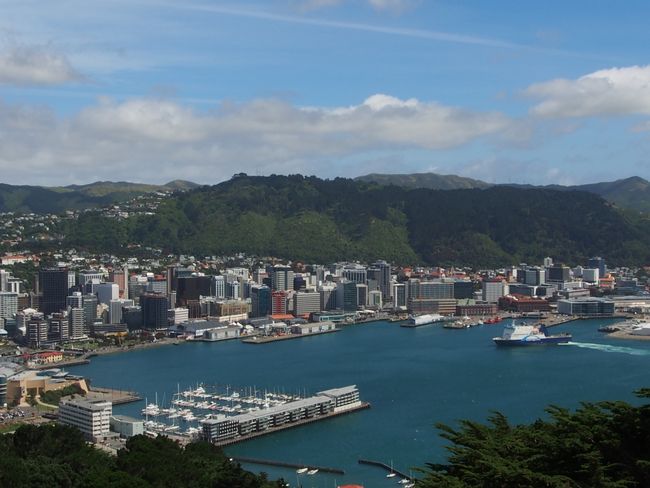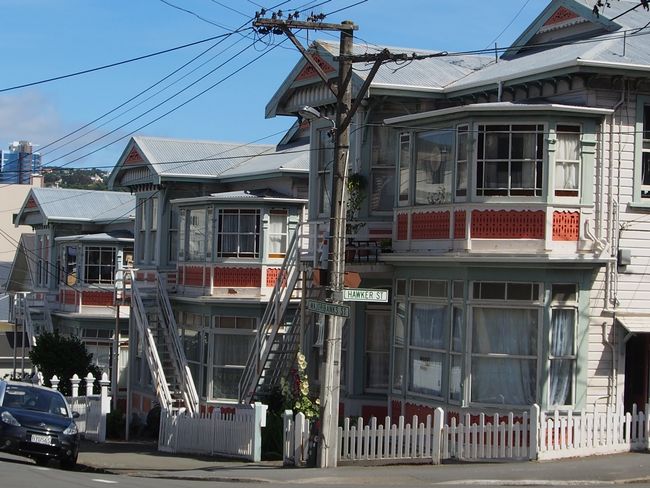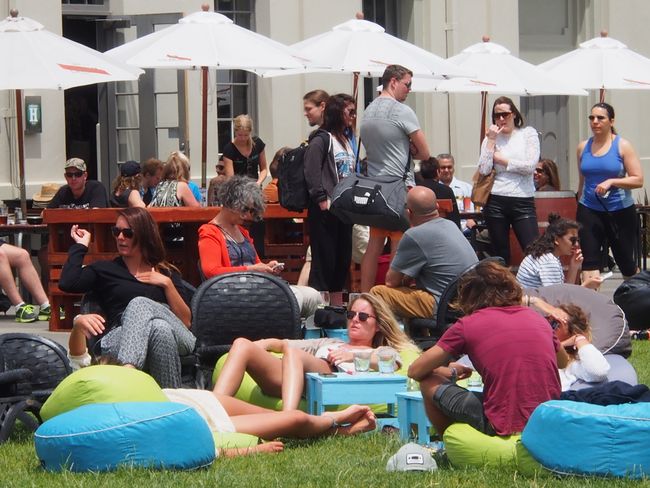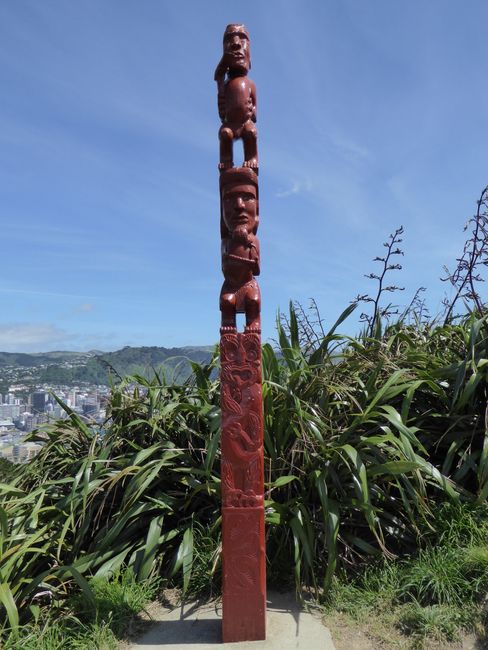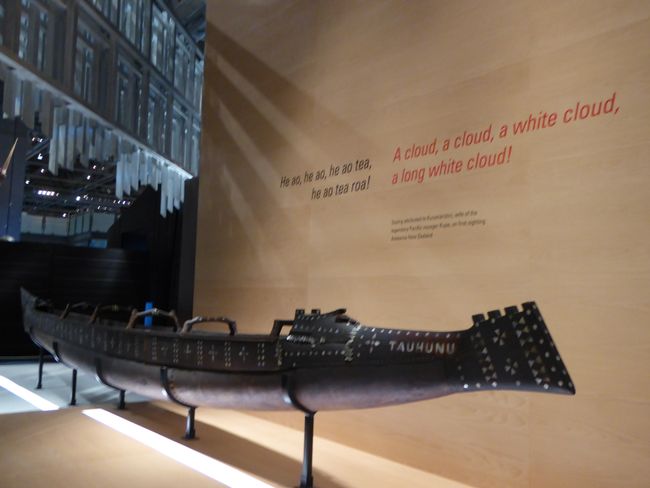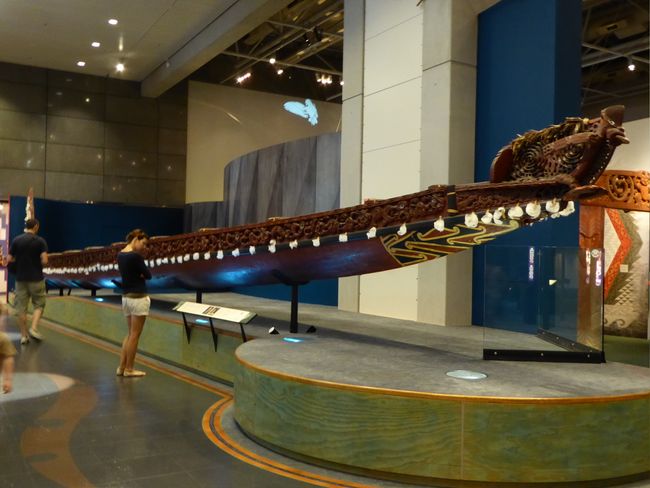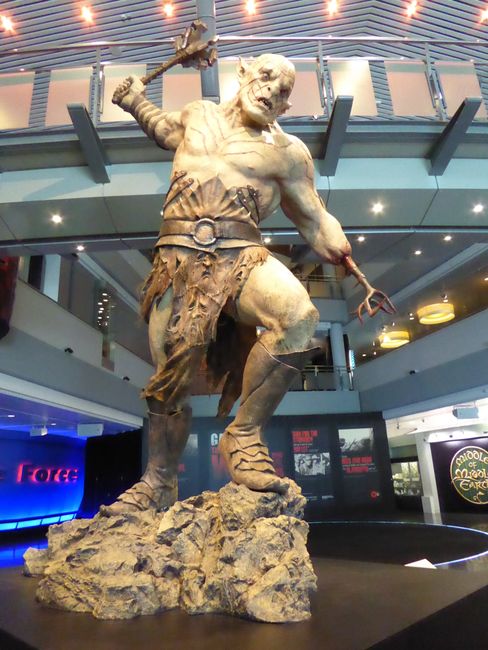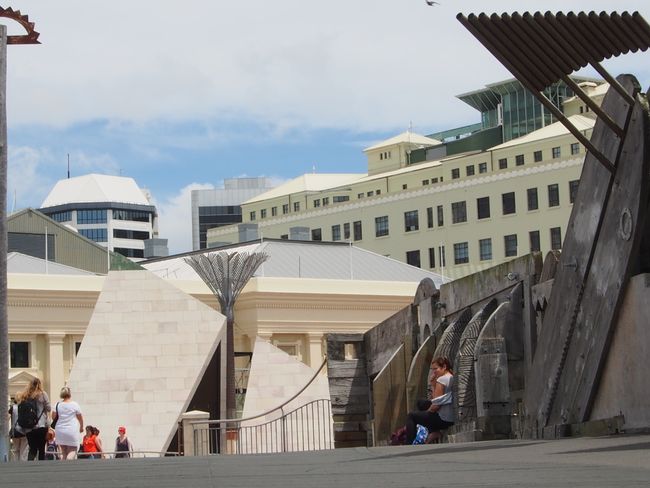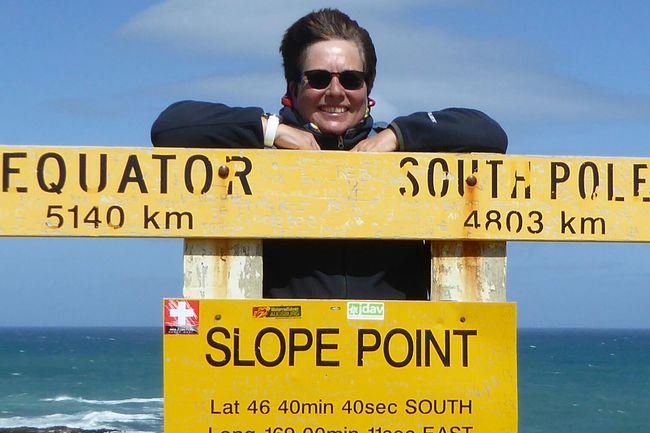
Neuseeland: 8000km solo durch das schönste Ende der Welt
vakantio.de/8000km_durch_neuseeland
Day 19 - Wellington, Te Papa Museum & Mount Victoria
प्रकाशित: 08.08.2019
समाचार पत्रिका के लिए सदस्यता लें
02.01.2015
I made a plan of what I have to do today. Tomorrow I'm leaving Wellington for the South Island and today I need to figure out where to drop off my rental car and whether I should handle the damage report today rather than tomorrow on my way to the ferry. Today is - I find out as I try to feed the parking meter just before 9 - still a public holiday. So free parking again. The lady at the reception tried to sell me a parking spot for $30 a day a couple of days ago but then said that January 1st was a holiday and parking is free. From January 2nd, you have to pay again. But the parking meter doesn't take money on January 2nd either. I ask the same receptionist if there's anything special happening today and she says: Public Holiday! Oh yeah, once again. And tomorrow, January 3rd? Yes, then I can park for free for 2 hours, after that you have to pay. Well, I guess I don't need a $30 parking garage when I can park outside for free. So I'm covered until 10:00 a.m. on January 3rd.
Now I'm still looking for a piece of bread. I still have a small poppy seed roll, but something new in that direction would be nice. There's actually a café open around the corner and they don't have any rolls. But they give me one of those reheatable paninis (pale and not heated up) without any filling. For a relaxed $2! I throw the thing in the toaster in my apartment and then I'm ready to go.
After a relaxed breakfast, because there's no parking meter ticking, I sit in the car at half past ten and head to the Mt. Victoria Lookout.
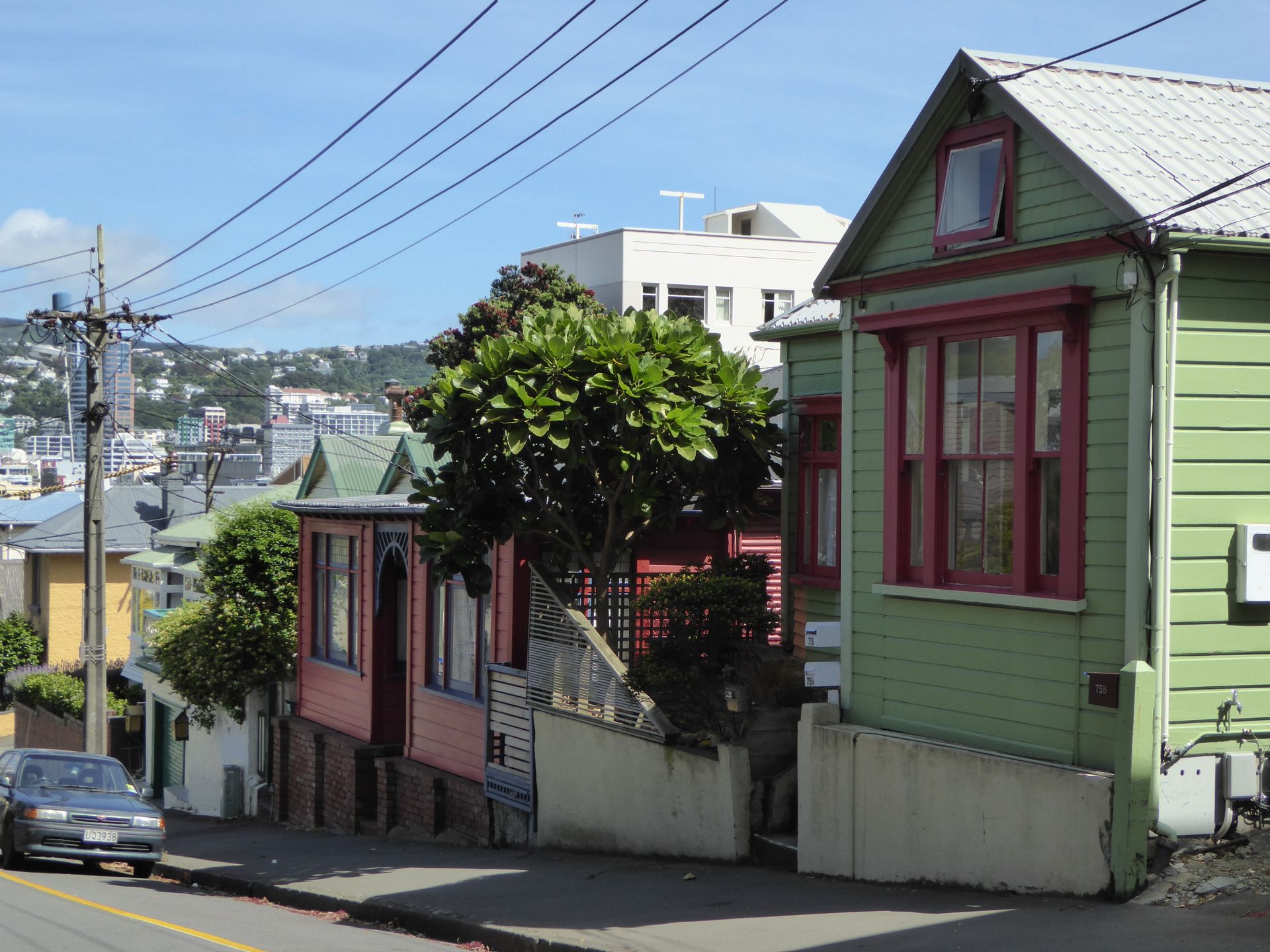
Incredibly steep and winding streets through residential areas lead all the way up to this hill. Living here must be awesome from a view perspective. But the wind is fierce up here and I think sitting on balconies and terraces must be rather uncomfortable. But the view is great. The sun is shining from a clear sky and on one side you can see Wellington, on the other side you can see the runway of the airport, which is beyond Mount Victoria.
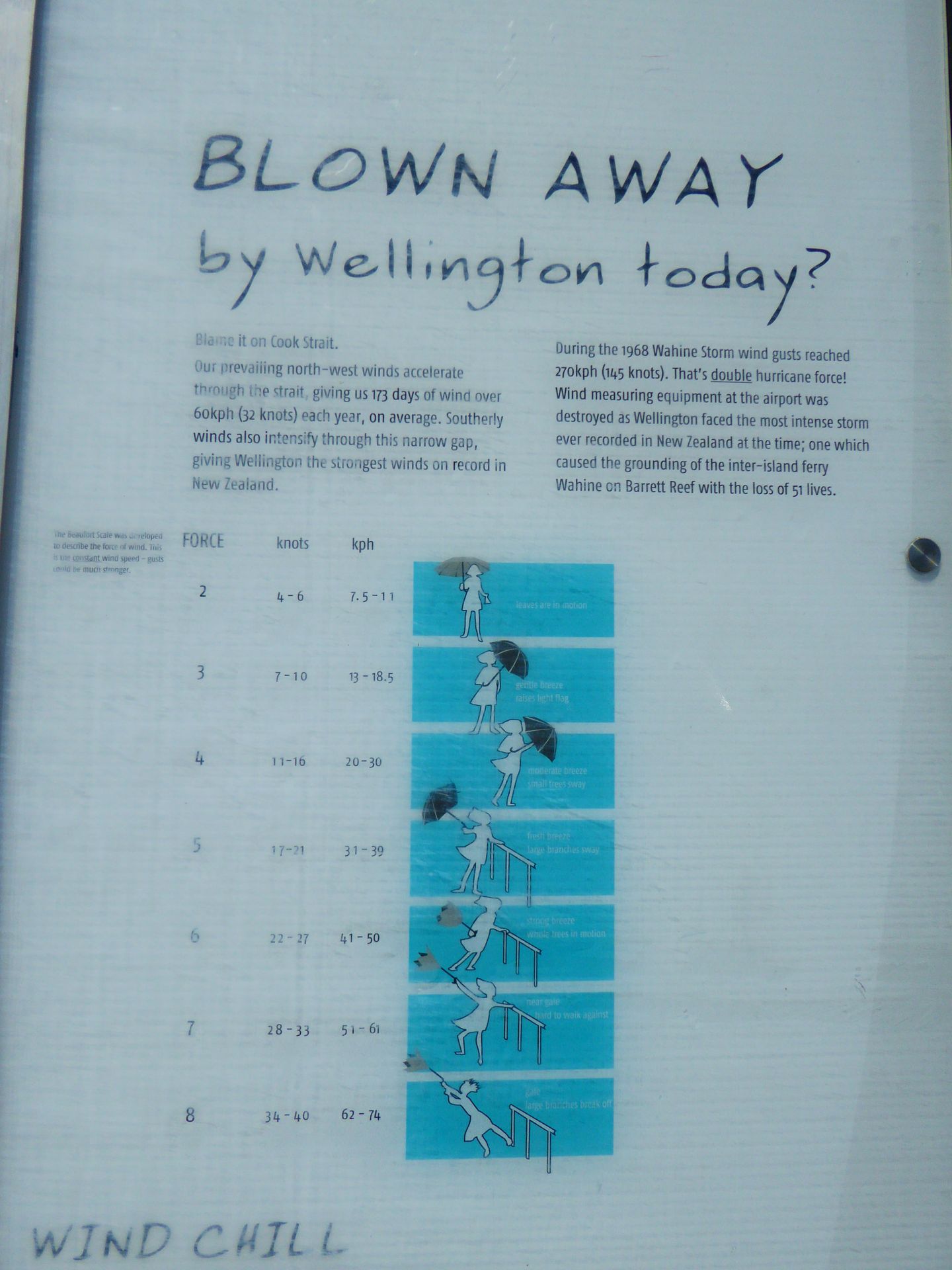


I drive back into the city and now I'm looking for Europcar. There were different pieces of information online, sometimes there were three branches, sometimes only two. Tomorrow I'll be taking the Bluebridge Ferry to the South Island, which departs about 250m from my hotel. But on the ferry's website, I see a note that Europcar only delivers and returns cars there by appointment. So I drive to the Interislander Ferry Terminal, which is 3km further away. Fortunately, the Europcar counter is unexpectedly open (because they're only open for 1 hour 3 times a day and the last opening time is actually over now). The girl at the counter is completely clueless. On the one hand, she stutters, looks like she's 16, and has absolutely no idea what she's doing. I'm glad that two other Europcar people join us briefly so that Sharon, the dumb girl, can at least start working on the damage report. Because now that the other two have informed me, I can drop off the car at the Bluebridge Terminal tomorrow and give the key to someone there - but I can't fill out a damage report. Because there's no Europcar counter there... Good thing I clarified that today. So I write the report and ask again how I can get the new car on January 22nd - yes, Sharon mumbles - and after asking twice, I understand that I have to pick it up here at the other ferry terminal. No delivery to the other terminal 3km away? Yes, Sharon mumbles again - you have to pick it up here. Really no delivery to the other ferry terminal? Oh, mumbles Sharon, you have to do that alone, but maybe someone will pass by who can give you a ride. Huh? Should I hitchhike on the highway in the city with 40kg of luggage or do Europcar employees drive around the city all the time looking for helpless people? Sharon just looks like a turtle and I know this won't work out here. I've had enough Europcar for today and I still remember the dreamlike and similarly stupid return of the car at Europcar in Perth 11 months ago...
In the meantime, I had considered dropping off the car today since I won't need it tomorrow. But now that I don't have to pay for parking and my friend Sharon told me that I can also drop off the car at Bluebridge Ferries by giving the key to someone there, I drive the car back to the hotel, find a parking spot, and go on the sightseeing tour I planned for today.
On the one hand, I want to go to Civic Square, a square where the old town hall stands next to a super modern event center and across the wooden and artistically decorated City to Sea Bridge, which spans the multilane road Jervois Quay.
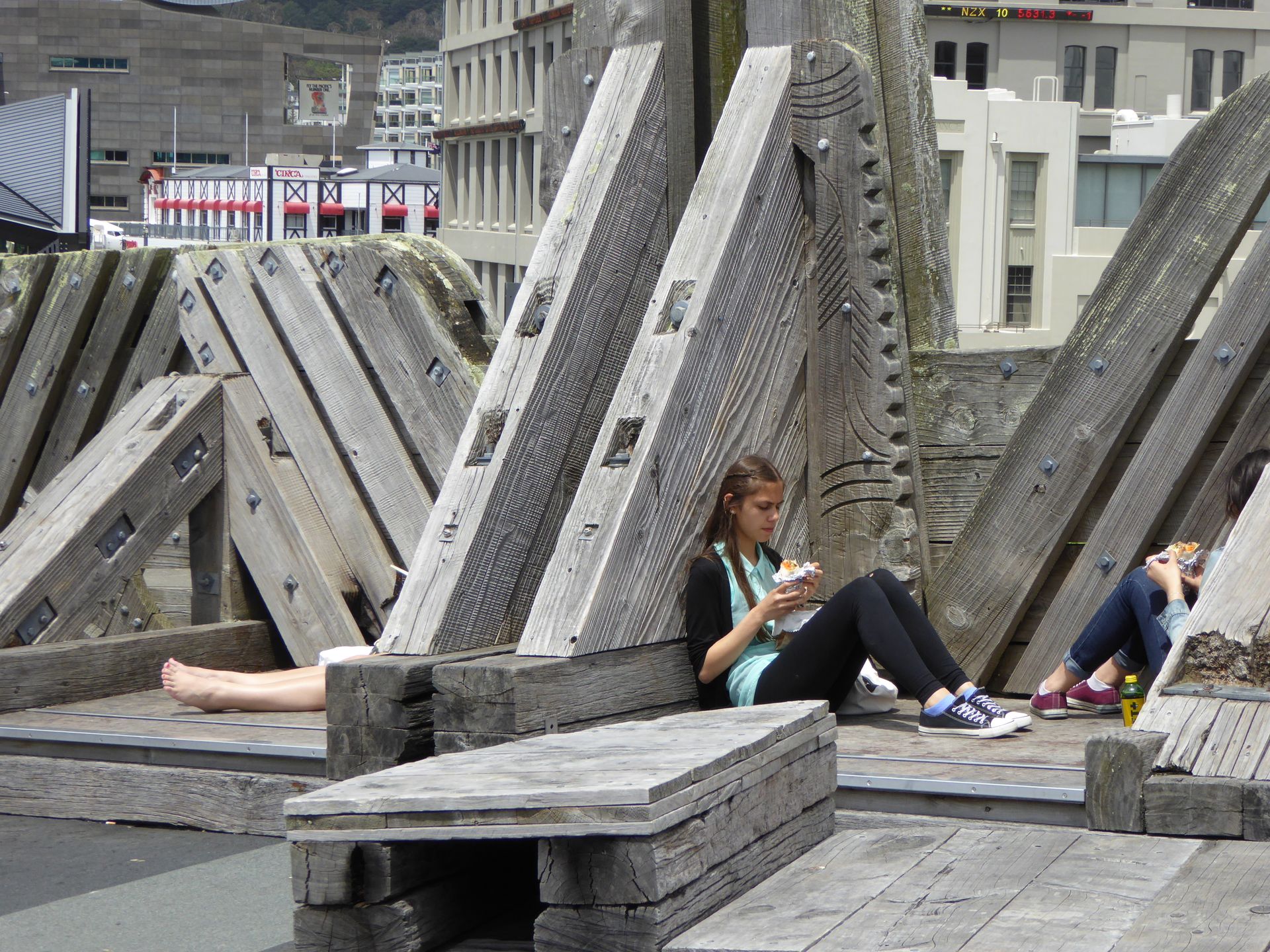
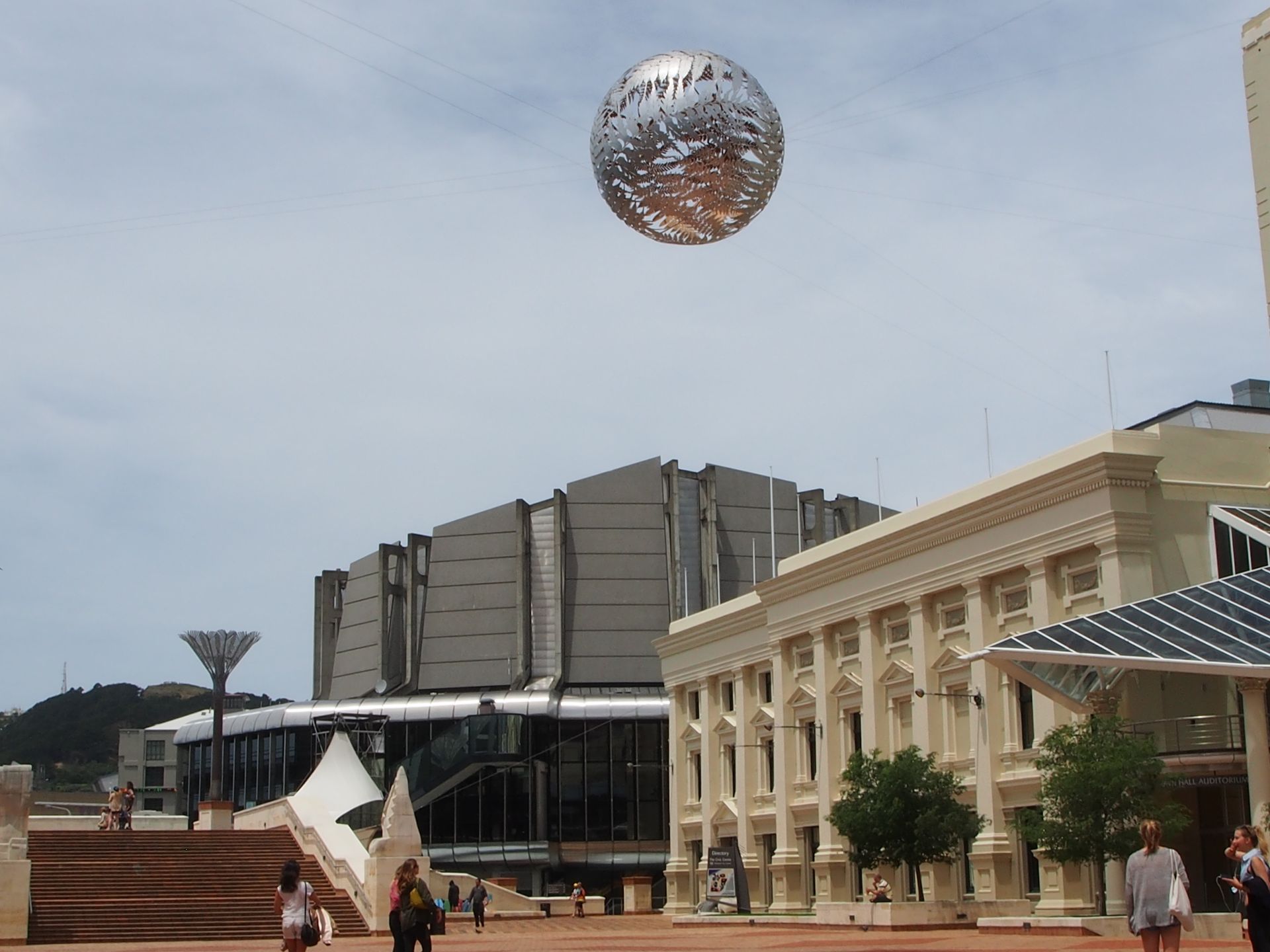
The City-to-Sea Bridge is a crazy mixture of different wooden sculptures and, like everywhere else, this artwork has been embraced by people as a place to hang out and have lunch or a coffee. It's rather empty at Civic Square. Here, not only trees are missing on this very uncomfortable square, but also people. The Central Library is closed as well and maybe there would be more life here otherwise. The library has some strange giant silver metal trees, apparently supporting parts of the building.
I stroll across the wooden City-to-Sea Bridge and walk straight to Te Papa/National Museum. I start my tour on the 4th floor around 2:00 p.m. and I skip the art exhibitions on the 5th and 6th floors. The museum houses an incredibly diverse range of topics.
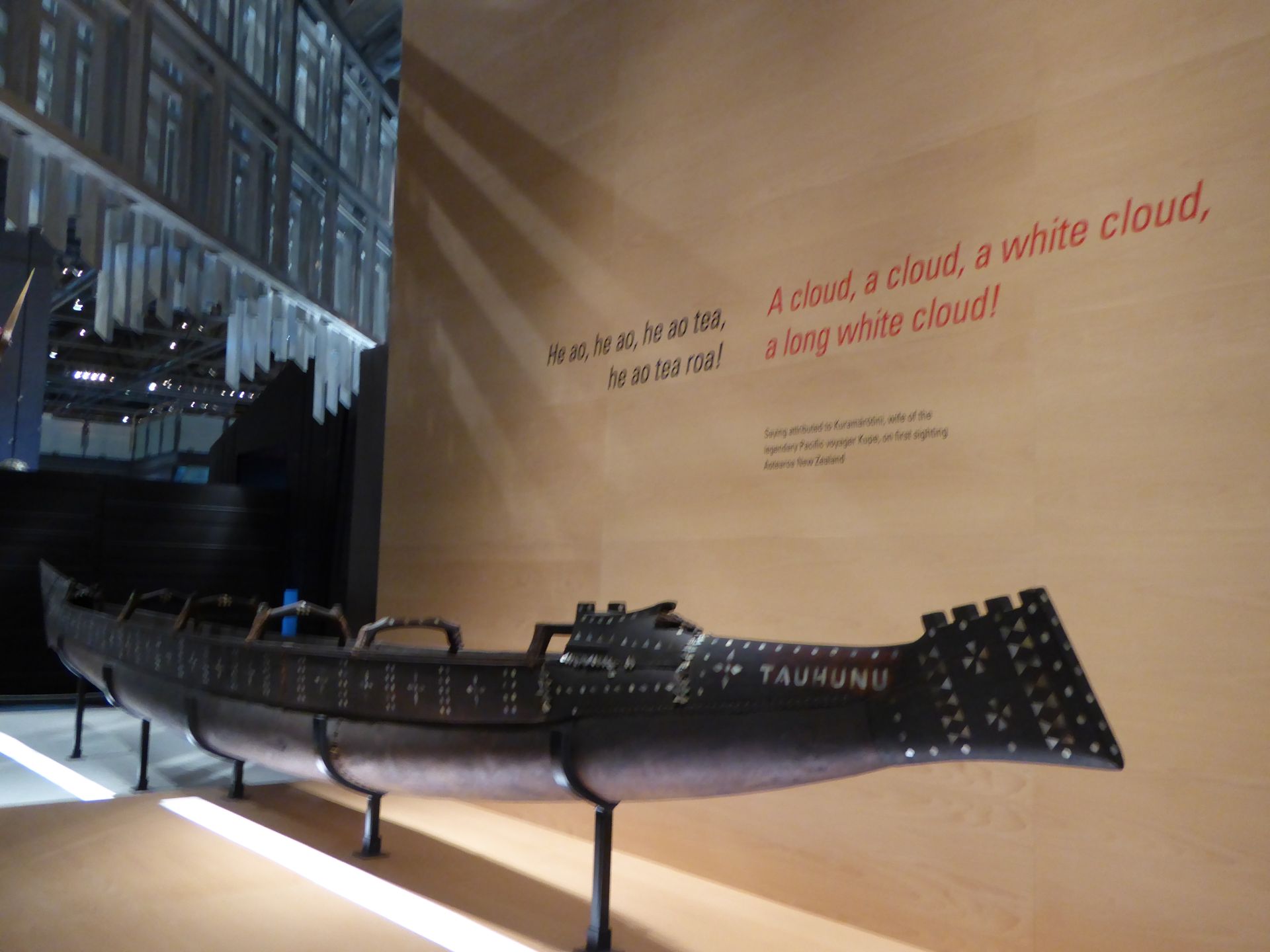
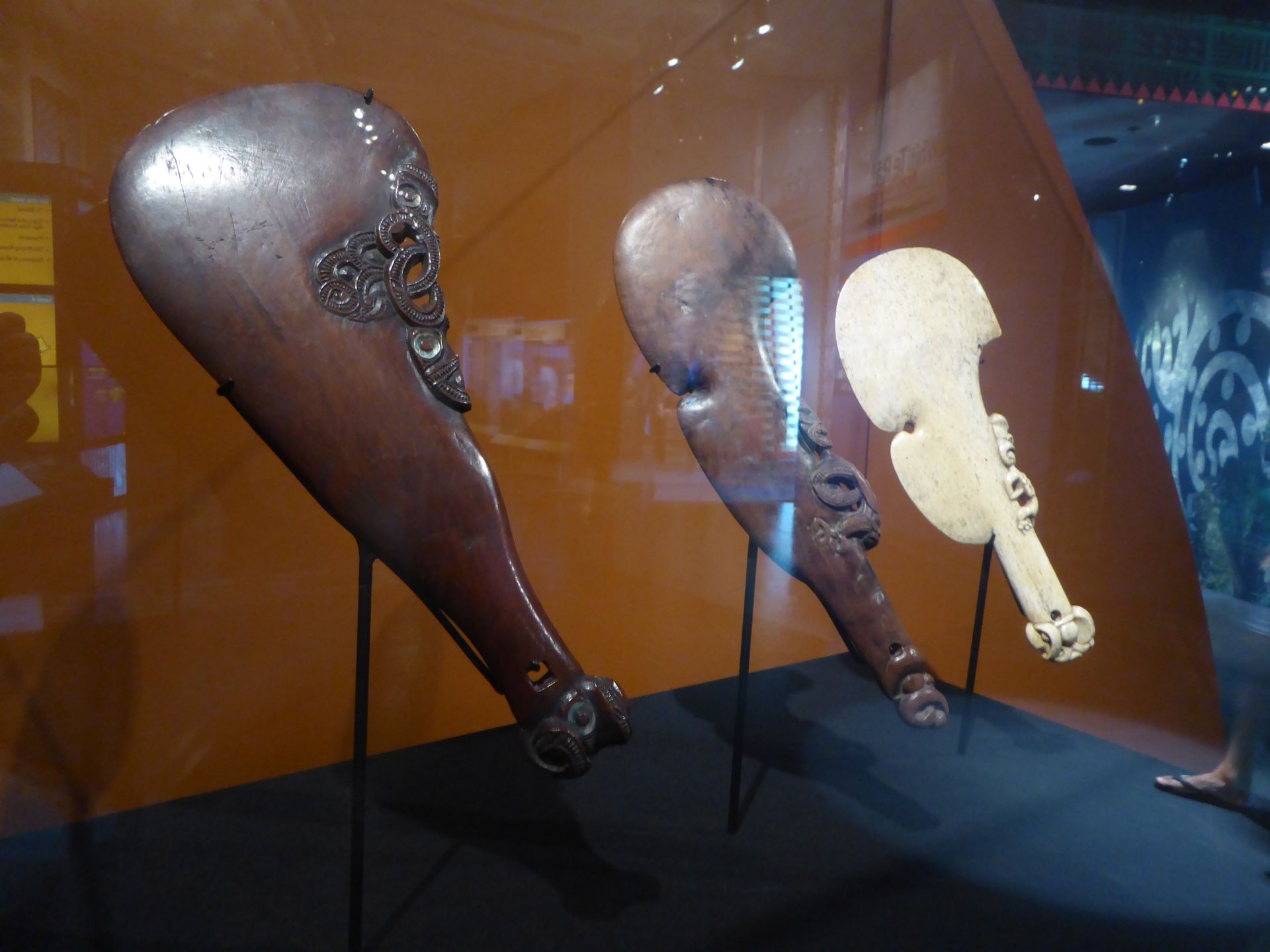
Starting from the settlement of New Zealand, the problems of humans and nature. The history of the Maori, extinct animals, non-indigenous animals that were introduced here and wiped out the native animals, the geological history, Maori mythology, their dwellings, weapons, etc. It's a kind of cultural and natural history museum of New Zealand. It's very entertainingly designed, with small looping video presentations and interactive elements to add some color. Although sometimes the layout is a bit confusing.
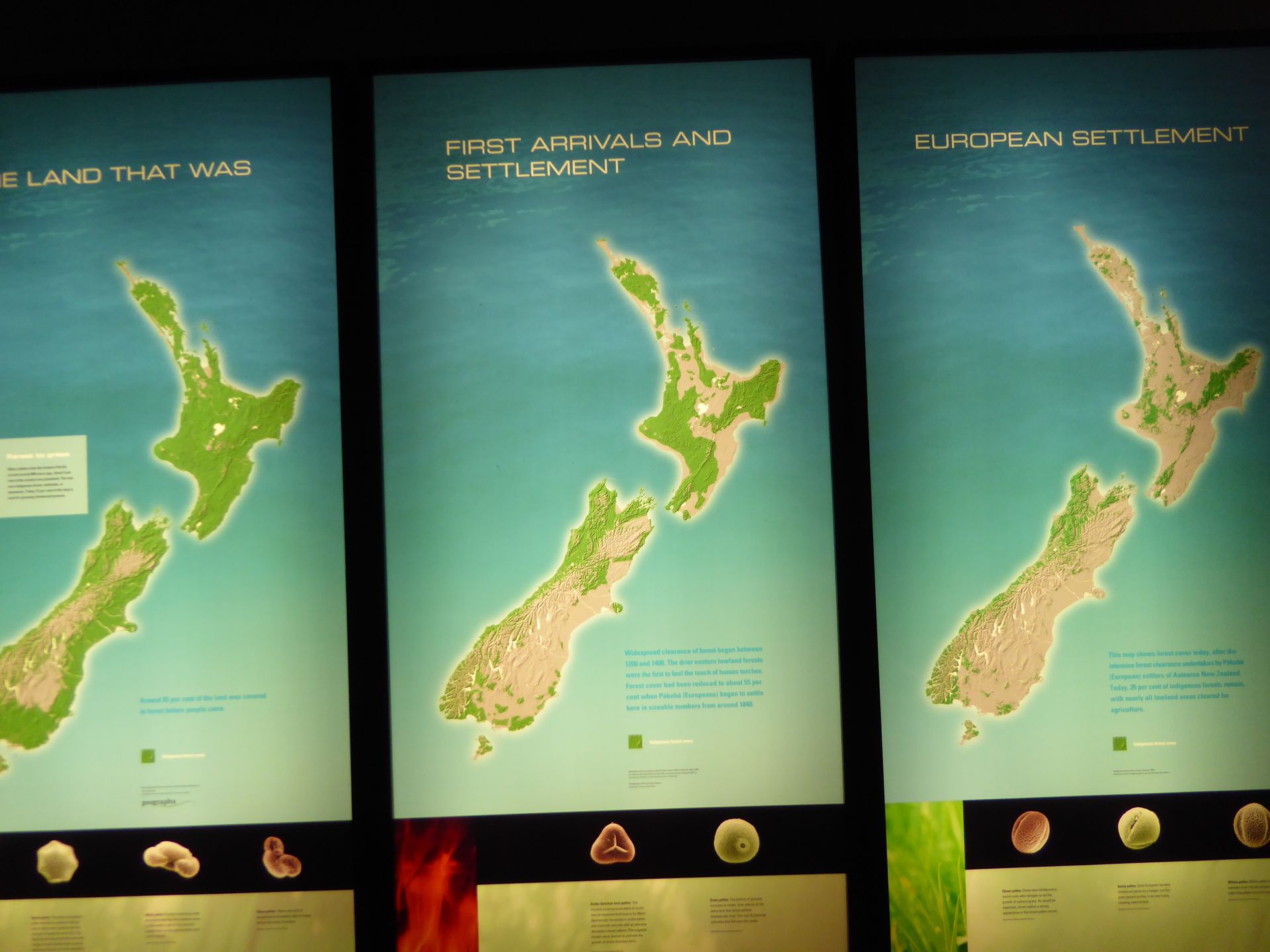
But some things are still impressive: Before the Maori settled the land, New Zealand was 95% forested. When the Pakeha (Maori for 'Europeans') came here later, more and more forest fell victim to agriculture and livestock farming. Already in the mid-19th century, when Europeans began to settle here, New Zealand only had 55% of its old forest stock. Today, at most 25% of the forests are still intact, because they grow in difficult-to-reach mountain regions and have not yet fallen victim to the human greed for land. Today, these forests are mostly part of national parks or preserves.
I meet Shrek - the incredible sheep! Shrek was actually named that way when it was recognized as a good marketing tool. Several years ago, the sheep escaped from its herd and spent almost 6 years in a high-altitude region, surviving the snowy winters in a cave. When the sheep was finally found by chance, it was completely overgrown with wool. The photos are unbelievable: A huge ball of wool with very short stubby legs and an almost invisible face. It could barely see. When it was finally sighted, 27 kilograms of wool could be clipped off. The finder of Shrek embarked on a kind of charity tour with the sheep and visited children, schools, etc. Shrek became the star of various New Zealand children's books and the farmer donated the proceeds to the New Zealand Children's Cancer Foundation. Shrek was put to sleep in 2011 because it was sick.
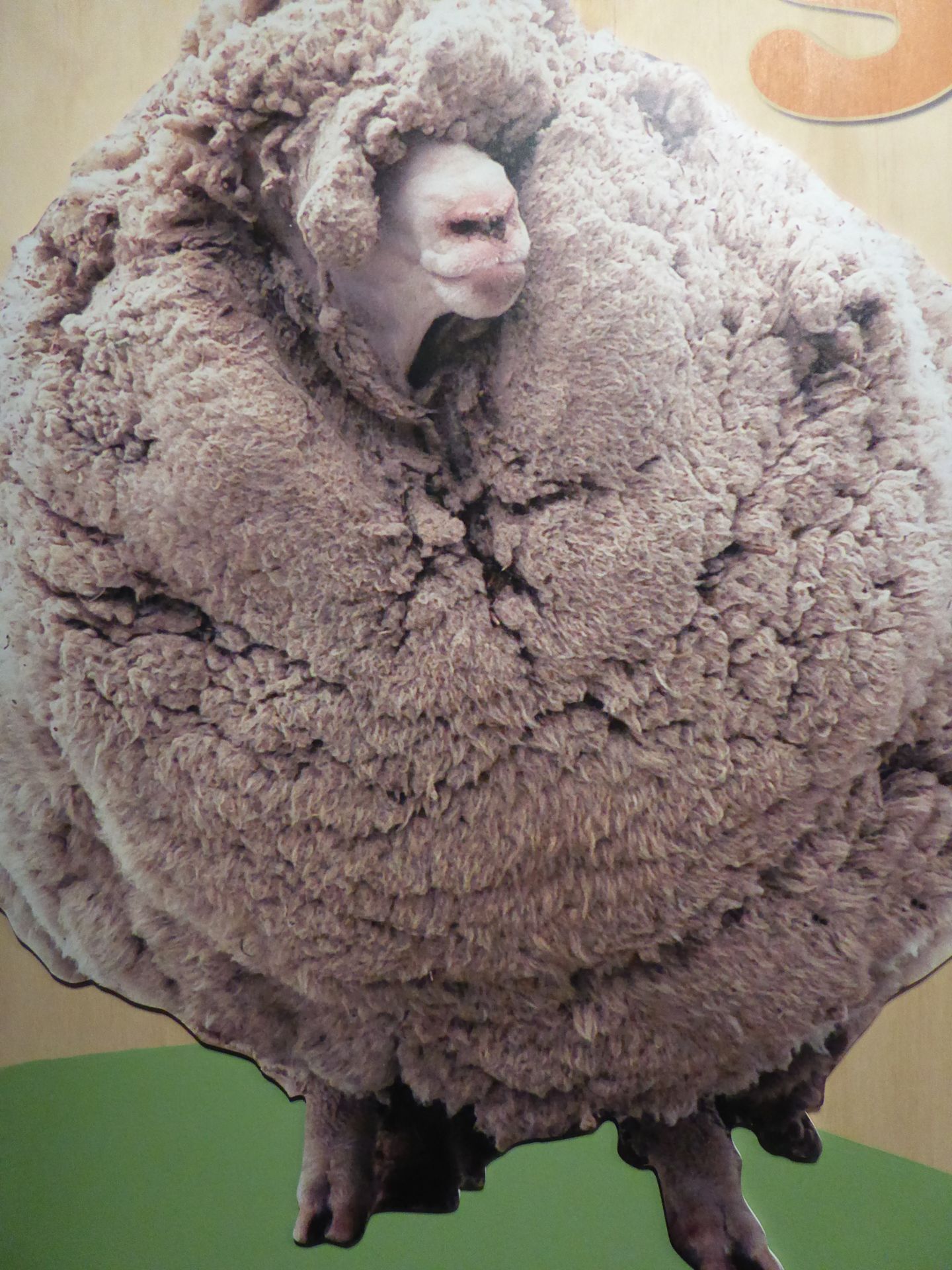
Shrek - the sheep with 27kg of wool
Aotearoa - the land of the long white cloud - that's what the Maori call New Zealand. As Kupe, the discoverer of New Zealand in Maori mythology, approached the coast in his waka (canoe), his wife called out: He ao, he ao, hea tea, he ao ta roa! A cloud, a cloud, a white cloud, a long white cloud! From the last words, the Maori word Aotearoa for New Zealand (cloud-long-white = the land of the long white cloud) originated.
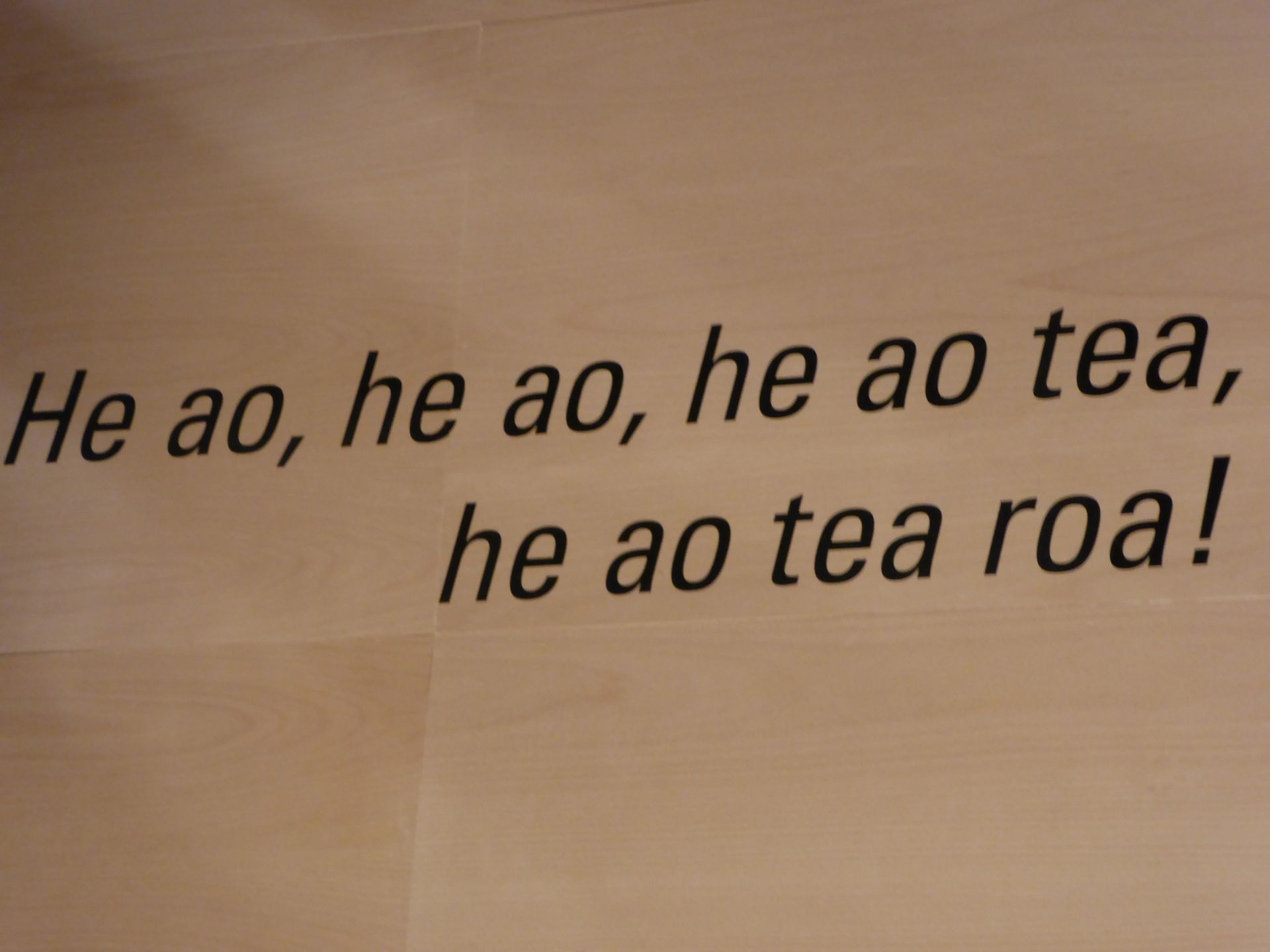
How did Polish children come to New Zealand? When Polish families were deported to Siberia during World War II, not many people survived. Especially the children suffered and apparently they were sent on an unimaginable journey west from Siberia 2 years later. On foot, by train, and through winding paths, they were sent to Tehran. Not many reached the city. Those who survived this journey spent additional months in hospitals or Persian orphanages, because most of them had lost their entire families by now or didn't know where they were. Over 700 Polish children were sent from there to New Zealand. Many of them surely still live here today.
World War I was a special fate for New Zealand. The British Crown expected the participation of the Commonwealth nation, especially in battles along the Belgian/French-German front line and in Gallipoli, fighting against the Turks. 12,000 New Zealanders died in this war. In terms of New Zealand's total population, these were among the highest losses a country had to mourn. Among the soldiers, there were many Maori.
The Rainbow Warrior is still a term. That it sank is also known. I didn't remember that the ship was blown up in the port of Auckland by two French agents in 1985, in order to prevent further protests against French nuclear tests in the South Pacific. The ship later found its final resting place in the Bay of Islands. The nuclear tests (by the French, Americans, and British) north of New Zealand in the Mururoa and Bikini Atolls have always angered the New Zealanders, but apparently they were powerless to prevent them. These tests by the French continued until the years 1995/96! Unbelievable.
In 1987, New Zealand declared itself a nuclear-free zone under the leadership of Prime Minister David Lange! Atomic-powered US ships were no longer allowed to land and the Americans practically imposed a ban on New Zealand by no longer sending any US Navy ships there. The relationship between the allies suffered greatly. However, the New Zealanders fought side by side with the Americans in Korea, Vietnam, and Afghanistan.
What are the current economic factors in New Zealand and what was it like 50 years ago?
Contrary to my assumption that wool is one of the main exports, it has declined from a former 34% to only 2.6% today over the course of 50 years. While in 1960, 25% of the exports consisted of meat, today it's only 15%. Dairy products now account for only 15% (1960: 26%). Today, various other agricultural products are ahead of the actually typical New Zealand things with almost 19% share. With 47%, other export goods are now being declared, whatever that may mean.
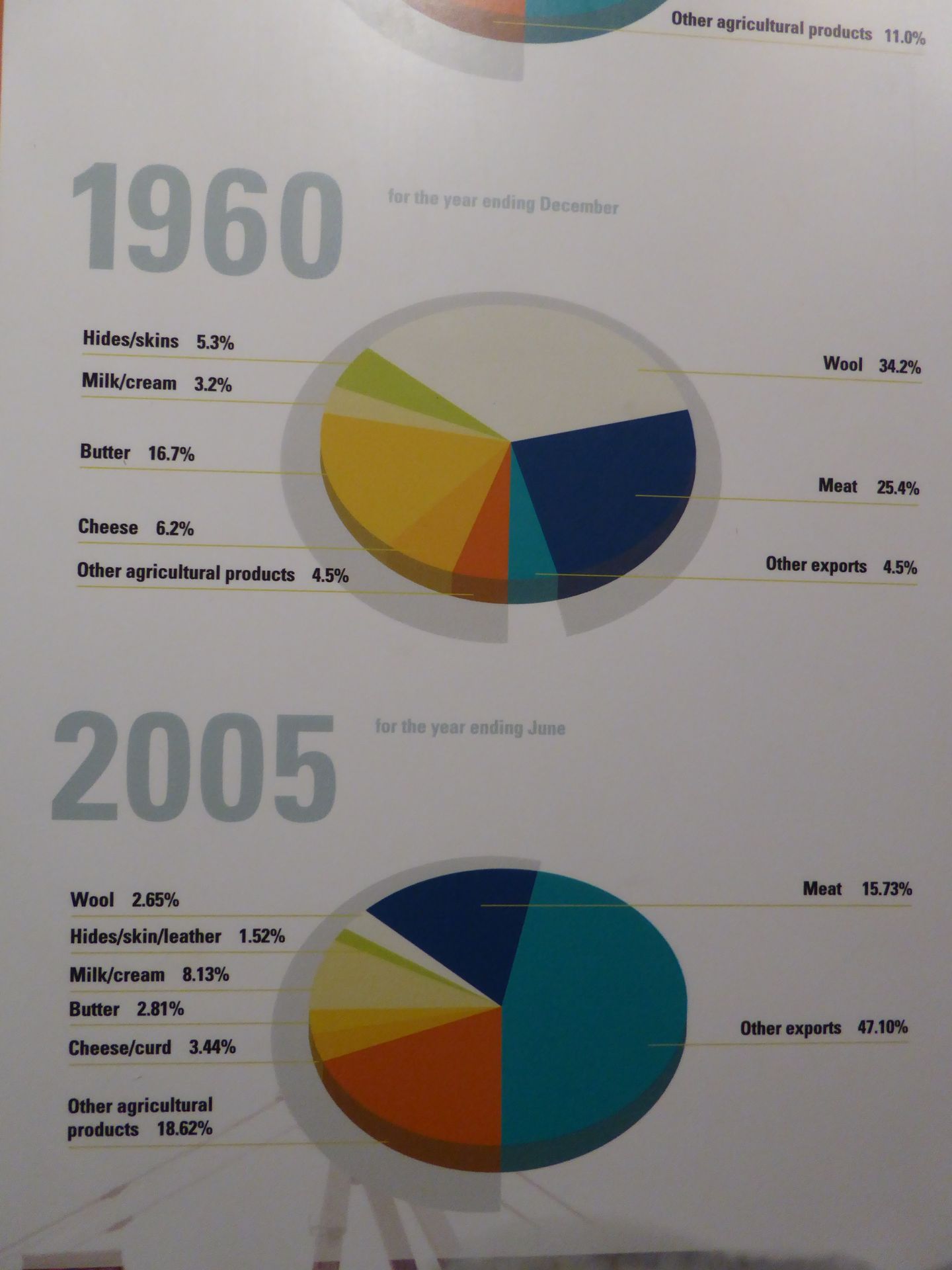
When I leave the museum so educated at 4:30 p.m., after passing by a sculpture of an oversized orc that massacred the dwarves and elves in the Hobbit movie yesterday, the sun is still shining and I head towards Cuba Street because I'm starting to get hungry and hope to find a nice pub with food there. No such luck. Most of them are still closed and the two that are open don't seem to have food. The sun hardly stands a chance in the narrow street, so eating outside is no longer an option because the wind is simply too cold. I get a stale coffee in a bakery that is also about to close - it's 5:00 p.m. The few shops that were open are all closing now. So I walk back towards the hotel and go to an Italian restaurant near the waterfront to eat. The pasta is too soft, the sauce is greasy, the wine is cheap plonk, and all together it costs $44. Welcome to New Zealand. I'll continue to be more self-sufficient!
As I write in my diary, the sky turns slightly pink and I hope for good weather tomorrow. Third attempt at the Old Bank Arcade - maybe it's open tomorrow. Usually it opens at 10:00 a.m., but what's normal here, where restaurants have signs in the window saying they're closed from December 19th to January 12th for the Christmas season. Either they're all making a fortune here or they don't care.
Daily distance: 10km
समाचार पत्रिका के लिए सदस्यता लें
उत्तर

यात्रा रिपोर्ट न्यूज़ीलैंड

